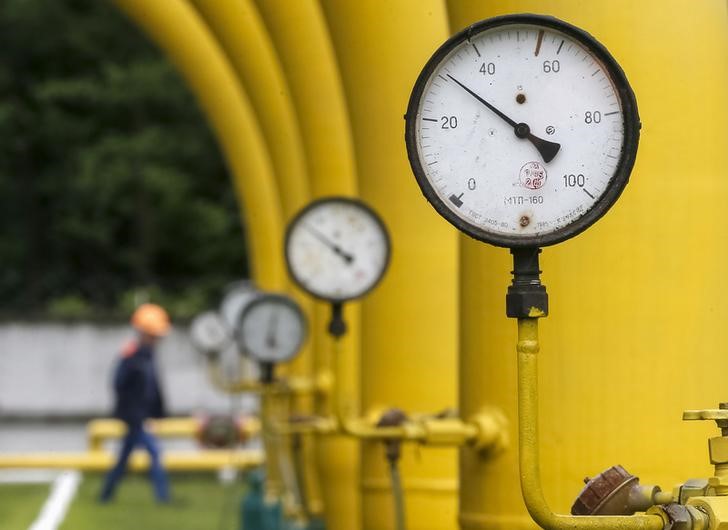Investing.com - Natural gas prices settled below the $2-level for the first time since April 2012 on Friday, as updated weather forecasting models pointed to warmer-than-normal temperatures across most parts of the U.S. through Christmas.
The East Coast is projected to see temperatures 15 to 20 degrees above normal this week and warm weather is also expected in the Midwest.
Bearish speculators are betting on the warm pre-winter weather to dampen demand for the heating fuel. The heating season from November through March is the peak demand period for U.S. gas consumption.
On the New York Mercantile Exchange, natural gas for delivery in January sank 2.5 cents, or 1.24%, to close the week at $1.990 per million British thermal units on Friday. It earlier fell to $1.959, a level not seen in almost four years.
For the week, natural gas futures plunged 19.6 cents, or 8.96%. Prices of the fuel are down 36% so far this year as weak demand and healthy stockpiles weighed.
Natural gas prices typically rise ahead of the winter as colder weather sparks heating demand. But warmer temperatures throughout the autumn and early winter due to the El Niño weather phenomenon has reduced heating demand, underlining concerns over a deepening supply glut.
The U.S. Energy Information Administration said Thursday that natural gas supplies in storage fell by 76 billion cubic feet, greater than expectations for a decline of 64 billion.
That compared with a drawdown of 53 billion cubic feet in the prior week, 51 billion cubic feet in the same week last year, while the five-year average change for the week is a decline of 65 billion cubic feet.
Total U.S. natural gas storage stood at 3.880 trillion cubic feet, 11.7% higher than levels at this time a year ago and 6.1% above the five-year average for this time of year.
Last spring, supplies were 55% below the five-year average, indicating producers have more than made up for all of last winter’s unusually strong demand.
Inventories of the gas are typically built up during the warm summer months and then drawn down in the winter as cold temperatures increase demand for the fuel.
The EIA's next storage report slated for release on Thursday, December 17 is expected to show a withdrawal of approximately 68 billion cubic feet for the week ending December 11.
That compared with a decline of 76 billion cubic feet in the same week last year, while the five-year average change for the week is a drawdown of 79 billion cubic feet.
Elsewhere on the Nymex, crude oil for January delivery settled at $35.62 a barrel by close of trade on Friday, down $4.35, or 10.88%, on the week, while heating oil for January delivery slumped 14.66% on the week to settle at $1.145 per gallon.
